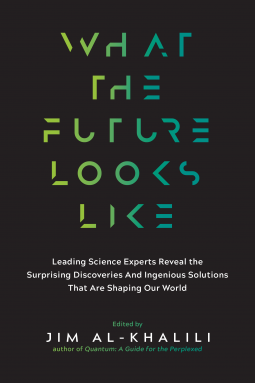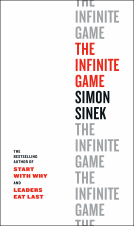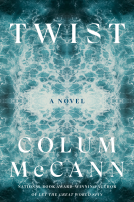
What the Future Looks Like
Scientists Predict the Next Great Discoveries—and Reveal How Today’s Breakthroughs Are Already Shaping Our World
by
This title was previously available on NetGalley and is now archived.
Send NetGalley books directly to your Kindle or Kindle app
1
To read on a Kindle or Kindle app, please add kindle@netgalley.com as an approved email address to receive files in your Amazon account. Click here for step-by-step instructions.
2
Also find your Kindle email address within your Amazon account, and enter it here.
Pub Date Apr 17 2018 | Archive Date May 01 2018
Experiment, The | The Experiment
Talking about this book? Use #WhatTheFutureLooksLike #NetGalley. More hashtag tips!
Description
Science fact, not science fiction, features in this wide-ranging update from leading experts on the cutting-edge developments that are already defining our future lives and world
Every day, scientists alight on pioneering solutions that will define the future of life on this planet, yet it isn’t every day you hear about these discoveries straight from the scientists themselves. Now, award-winning science writer Jim Al-Khalili and his top-notch team of experts draw on their mastery of groundbreaking scientific research to predict what advancements will shape the future just around the corner and beyond.
Taking in genomics, robotics, AI, the “Internet of Things,” synthetic biology, interstellar travel, colonization of the solar system, and much more, What the Future Looks Like explores big-picture questions like: Will we find a cure to all diseases? The answer to climate change? And will bionics one day turn us into superheroes? Neither celebratory nor alarmist, here is entirely reality-based insight on the science-fueled future that is helping to solve intractable problems—and that’s already unfolding all around us.
Available Editions
| EDITION | Other Format |
| ISBN | 9781615194704 |
| PRICE | $14.95 (USD) |
| PAGES | 240 |
Featured Reviews
 David W, Media/Journalist
David W, Media/Journalist
Risky Business
When I was born, the five biggest cities were New York, Tokyo, London, Osaka and Paris. Today, they are Tokyo, Delhi, Mexico, Shanghai and Sao Paulo. No one predicted that. Soon Mumbai and Beijing will displace the laggards. The point is, how do we justify predicting the future? Meaning, beyond simply The Jetsons? Jim Al-Kahlili’s collection of essays stabs at it from numerous angles. They are arranged from the inside out: microbiology, artificial intelligence, diminishing biodiversity, climate change, robotics, apocalypse, space travel, and time travel/teleportation.
For the most part, it is all reasonable and recognizable. Scientific breakthroughs are extrapolated and exploded, posing some possibilities for future exploits and exploitation. One of the recurring ideas is DNA as a replacement for digital ones and zeroes in a base eight system. The amount of data in DNA is staggering, and if we can adapt that to our computers, it will be an order of magnitude beyond anything we’re drooling over today.
The book is for a general audience, so even though its chapters come from various academics and PhDs, the words and sentences are easy to read and understand. It is what is now called accessible. This is fortunate, as many of the topics are not understood by anyone at all. How artificial intelligence programs result in the results they do is a mystery. Quantum physics is famous for being incomprehensible. Biochemistry is right in there, opening new vistas we never knew of. We don’t even have names for things biologists are discovering.
Of the 18 chapters, seven are by women scientists, the first time I have come across anything like a balanced presentation. That is as refreshing as the book itself.
David Wineberg
 Kurtis M, Reviewer
Kurtis M, Reviewer
A great general science non-fiction guide for general audiences with words and sentences that are easy to read and comprehend, covering upcoming technology, and written by experts in their respective fields. "New technologies have a way of bettering our lives in ways we cannot anticipate. There is no convincing demonstrated reason to believe that our evolving future will be worse than our present" The book covers topics from climate change to Happy Pills and reminds us that "genes are not destiny".
 Ricardo D, Reviewer
Ricardo D, Reviewer
I wouldn't mind seeing this being included as compulsive reading at schools, given the insight into the incredible advancement in technology, the rate it grows, and how it continuously aids is in our daily lives. What The Future Looks Like is an exceptional study piece for anyone even remotely interested in being at the frontlines of what's going on in the world other than politics.
Readers who liked this book also liked:
Silvia Moreno-Garcia
Historical Fiction, Literary Fiction, Sci Fi & Fantasy
Dominic Pettman
Health, Mind & Body, Nonfiction (Adult), Politics & Current Affairs


















